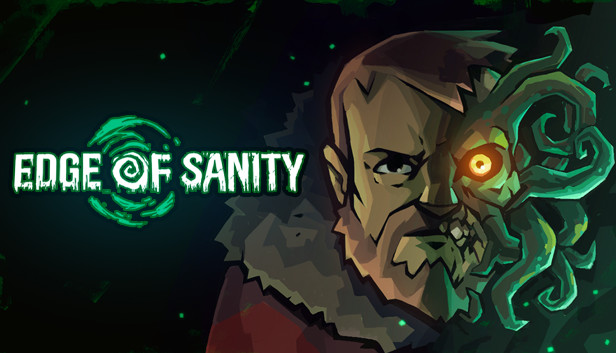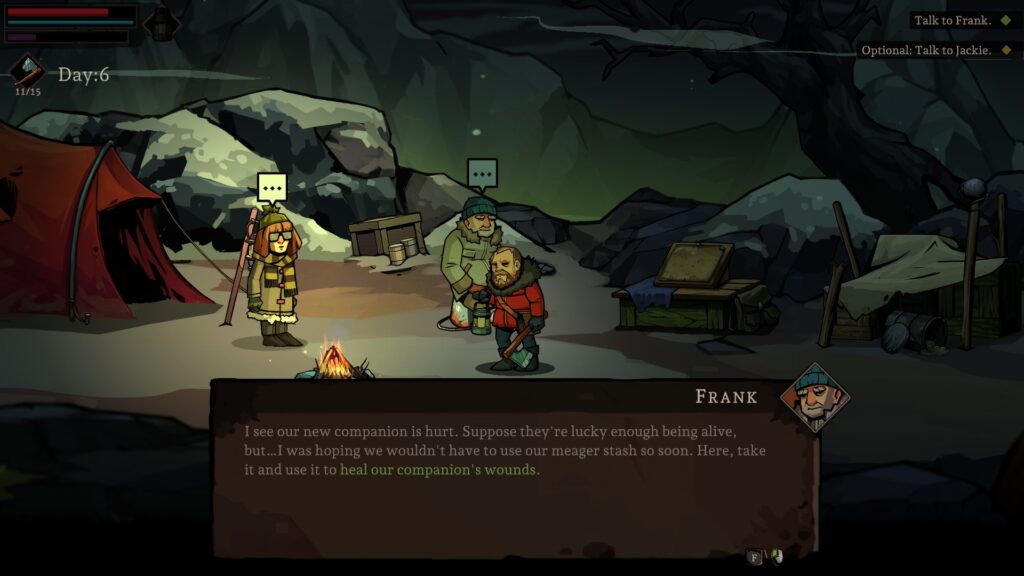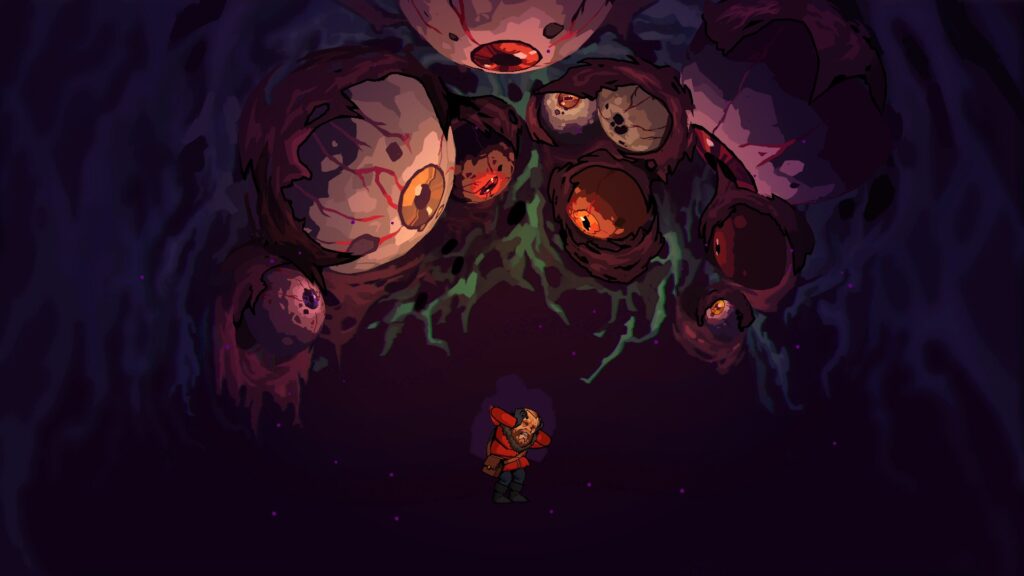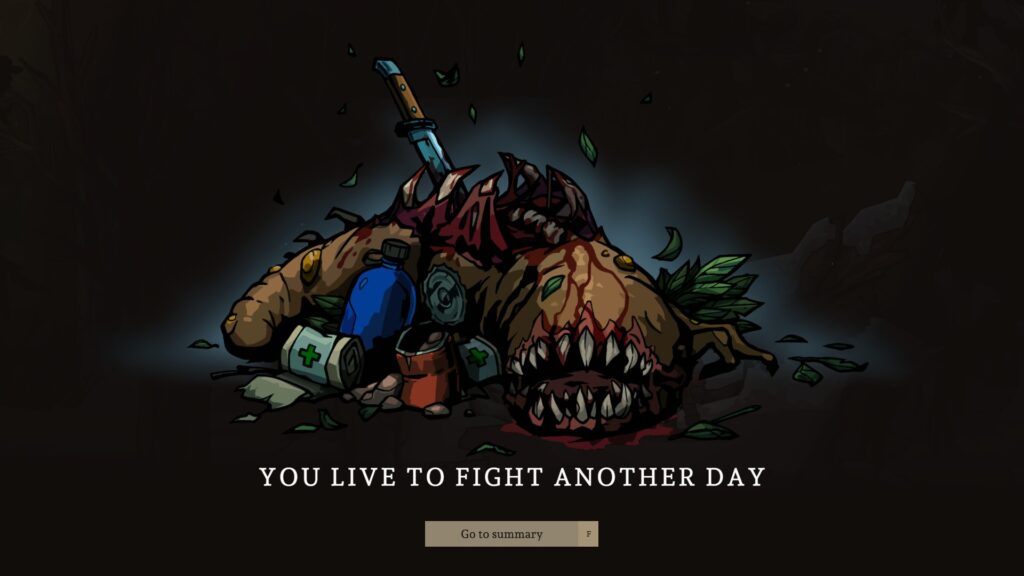
Developer: Vixa Games
Publisher: Daedalic Entertainment
Platform: PC, PlayStation 4, Playstation 5, Nintendo Switch, Xbox One, Xbox Series X/S
Tested on: PC
Edge of Sanity – Review
Released on September 13, 2024, Edge of Sanity is a 2D Lovecraftian horror game developed by Vixa Games. In the game, you uncover a disturbing story while gradually descending into madness as you lead a group of survivors. Together, you scavenge for supplies, explore the eerie Alaskan wilderness, and struggle to survive against the eldritch horrors that lurk in the untamed landscape.
Story
Set in Alaska during the Cold War, Edge of Sanity puts you in the role of Carter, a PRISM resupply employee tasked with supporting scientists at a remote field lab. The story begins with Carter returning to the outpost suffering from amnesia, which is revealed through a conversation with his coworker. Soon after, Carter experiences a dreamlike encounter with an eldritch creature, and shortly afterward, the area becomes overrun by monstrous entities inspired by the Cthulhu mythos. A mass evacuation ensues, but Carter is left behind.
Stranded, Carter begins to explore the forests, mines, and PRISM research centers, searching for resources and other survivors. As the story unfolds, you gradually uncover the origins of the eldritch creatures and learn more about Carter’s own complex role in the unfolding events. The latter is often via overheard conversations between other characters.
Graphics
With its hand-drawn art style, Edge of Sanity immediately evokes a sense of nostalgia and feels like an instant classic. The darker color palette complements the game’s eerie tone and emphasizes the strategic use of light sources. This contrast makes the vibrant patches of eldritch corruption even more striking, even when lighting is not in play. The simple yet effective art style also enhances the focus on the game’s narrative, allowing the story to take center stage.
Sound
The sound design in Edge of Sanity is superb, creating a deeply immersive atmosphere. From the peaceful yet somber tune at your base camp to the unsettling sound effect when saving, the game masterfully uses audio to unnerve the player. Sound is often your first clue of an impending monster encounter, skillfully building tension. In other moments, the sound aligns with what you already know as a player. For example, when hiding, you can hear your own breath, heartbeat, and the menacing sound of nearby enemies regardless of there actually being enemies nearby, preventing you from simply waiting it out in safety. This audio design enhances both suspense and immersion.
Gameplay
As a narrative-focused game, the core gameplay of Edge of Sanity is relatively simple. You navigate in 2D, interacting with objects the game highlights as interactable. However, the deeper mechanics lie in camp management and the Trauma system, where your choices significantly impact the experience.
When not on excursions, you manage a campsite with survivors you’ve rescued. Survivors can be assigned to tasks like upgrading or working at food and drink stations, or they can be sent out to scout new locations for future scavenging. In addition, there are key locations within the camp, such as the tent, workbench, and storage. These can also be upgraded by assigning survivors, and they help keep camp operations running smoothly. For example, resting in the tent partially restores your health and sanity, while assigning survivors here can boost morale. The workbench allows you to craft useful items for exploration or necessary supplies to maintain your survivors’ health.
A distinctive feature of the game is the Trauma system. Prolonged exposure to eldritch monsters increases your trauma gauge, which fills up based on how long you take to dispatch enemies or if you opt for non-lethal methods. Each level of trauma brings new effects, which can be either beneficial or detrimental. You can slow the accumulation of trauma using trauma-reducing items found on excursions, crafted at camp, or by dying during exploration. Once you hit the fourth level of trauma, it’s game over as you succumb to madness.
Choices in Edge of Sanity carry significant weight. Dying during an excursion results in the day being skipped, with all expended resources lost and nothing scavenged being saved. Additionally, choices regarding where to search for survivors come with real consequences – if you delay rescuing someone, they may not survive by the time you reach them. This makes decision-making and resource management crucial to survival.
Conclusion
Edge of Sanity delivers a masterfully immersive experience, blending atmospheric sound design, stunning hand-drawn visuals, and an engaging narrative. The game excels at building tension through its strategic use of lighting and audio, keeping players on edge as they navigate the eerie Alaskan wilderness. Its simple yet effective gameplay is enriched by complex mechanics like the Trauma system, making every choice feel significant. For fans of Lovecraftian horror and/or narrative-driven games, Edge of Sanity offers a deeply satisfying and haunting journey into madness.









No Comments